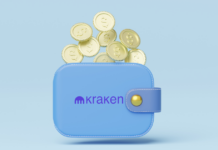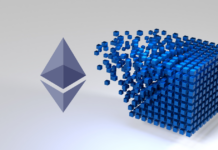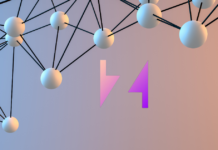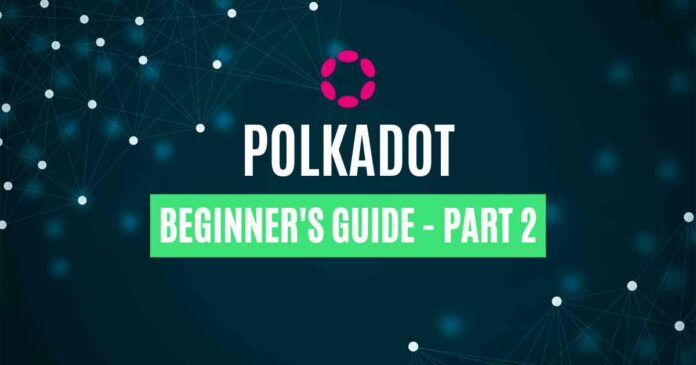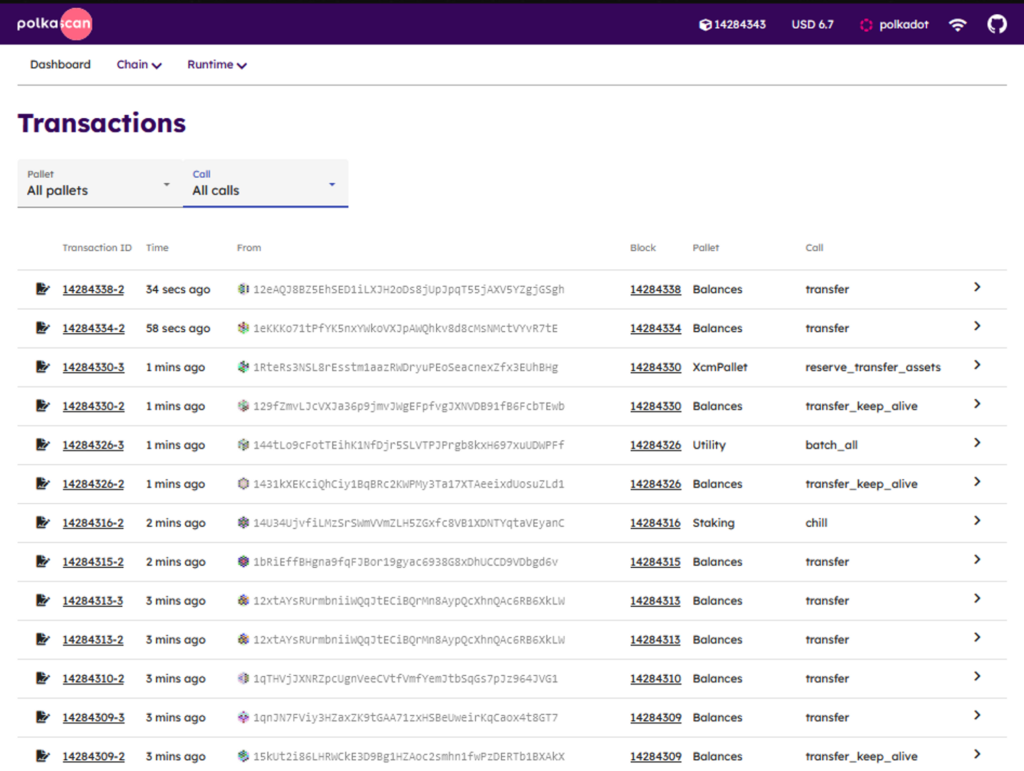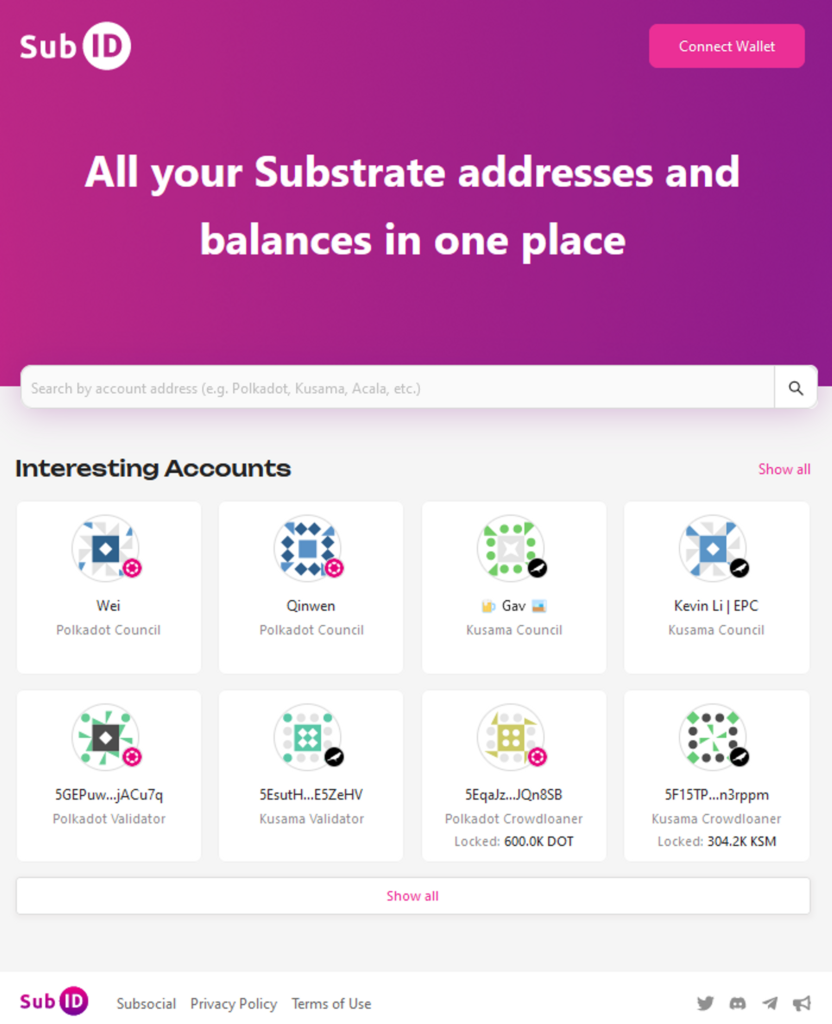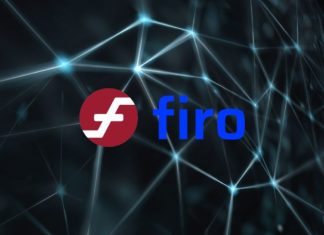We covered the basics of the Polkadot ecosystem in the previous article. Polkadot’s extraordinary ecosystem framework has disrupted the crypto paradigm. But what more does the revolutionary blockchain offers?
Let’s find out! Polkadot is a next-generation blockchain that seeks to support a heterogeneous multi-chain framework. It is regarded as one of the most innovative projects in web3 and has garnered a lot of interest from a broad community of investors, developers, and users.
Domains in Polkadot
It is typical for every internet user to visit multiple websites every day. And almost all website names are readily readable at a glance. But does our operating system or the internet understand these words? No, they do not. The DNS (domain name system) translates these words to IP addresses so your browsers can load internet resources.
The Polkadot Name System (PNS) accomplishes the same thing but does so in a slightly different way. They work in tandem with web3. PNS is a decentralized domain name system constructed with the Substrate framework. It can call on smart contracts, wallets, and NFTs, among other things, with a .dot domain name.
🚀🚀🚀 PNS domains for 8 digits are unlocked, get your .dot domains now! We're thrilled that the PNS domain https://t.co/VGlxIe5cvF and https://t.co/2Iji0F1OGs have been claimed by @MoonbeamNetwork ! https://t.co/nK0LbWfmA3
— Polkadot Name System (@PolkaNameSystem) July 13, 2022
This system can connect various addresses in a multi-chain ecosystem. In a nutshell, it brings fragmented identities together so that you can comprehensively present yourself. Also, PNS integrates on-chain and off-chain data and connects Web2 with Web3. It improves the interactive quality of social, DAO, community administration, gaming, etc.
How Polkadot Domains Works?
For example, let’s say my name is “Abhay.” I have web 2.0 accounts and a digital wallet with multiple tokens and NFTs. All I have to do is to use PNS is acquire the domain name abhay.dot and link everything mentioned above to a single location.
With PNS, third parties can send funds via abhay.dot instead of just using machine-readable attributes. abhay.dot parses the transaction details and deposits the funds to the appropriate address.
So, PNS will instantly create a domain name that ends in.dot.site to represent the top of the PNS tree without requiring any plug-ins. You can view the NFT avatars, artwork, and characters I’ve collected by entering abhay.dot.site into your browser. If I want to share information by pages, I can use specific subdomains, as below:
- wallet.abhay.dot
- nft.abhay.dot
- profile.abhay.dot
5/ @PolkaNameSystem, an open, decentralized domain name system on Polkadot, revealed the news on new domain name registration & the future DAO governance, as well as explained the details of the ongoing PNS Carnival campaign: https://t.co/mdA0eT8vrK
— Polkadot (@Polkadot) November 27, 2022
Users can also link web 2.0 accounts on the same site. They can integrate and collect data from multiple chains under one roof, acting as a personal ID and digital gateway for Web 3.0. Moreover, users have complete ownership and management rights over their digital identities.
How to use Polkadot’s Explorer?
Polygon is an openly accessible digital ledger of transactions. However, the issue with blockchain data is that it can be challenging to analyze and comprehend. So, rather than looking at raw data on a blockchain, which is virtually impossible to decipher, you need to use a block explorer for more straightforward navigation through the Web3 space.
Polkascan is one of the most widely used Polkadot explorers. It allows users to look for and browse transactions and blocks seamlessly. Moreover, the explorer also provides information about each transaction and block, such as the Signature and Timestamp.
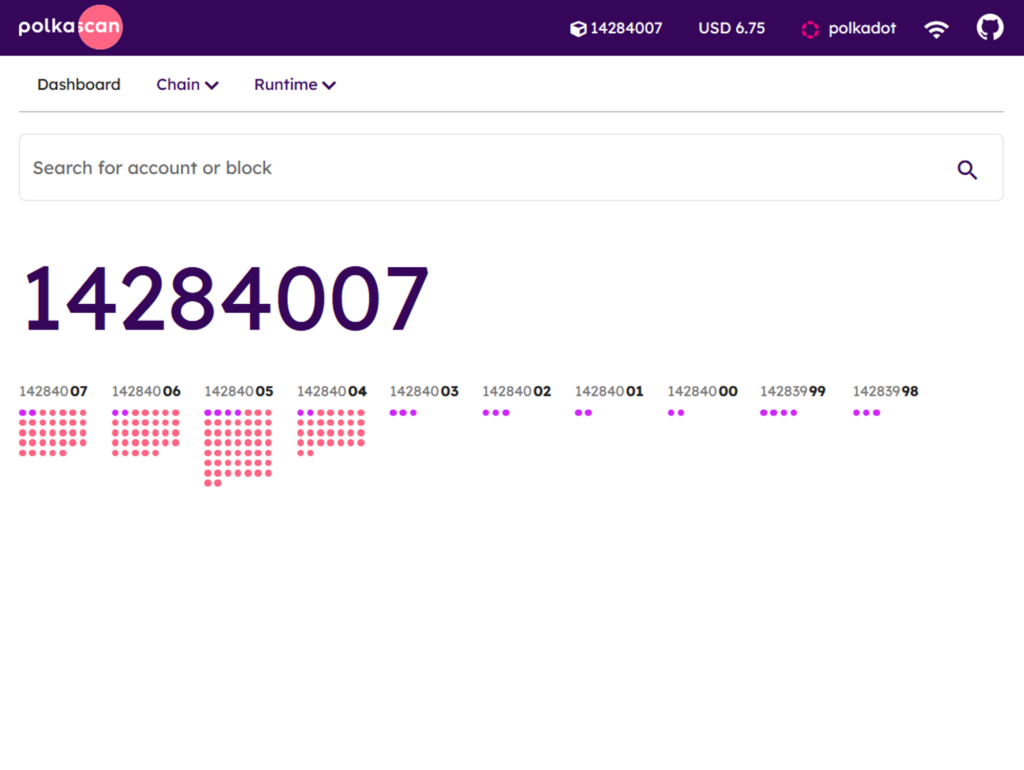
With Polkascan explorer, you can:
1. Search for addresses: Polkascan allows you to search for any Polkadot address and see all transactions that have been made using that address.
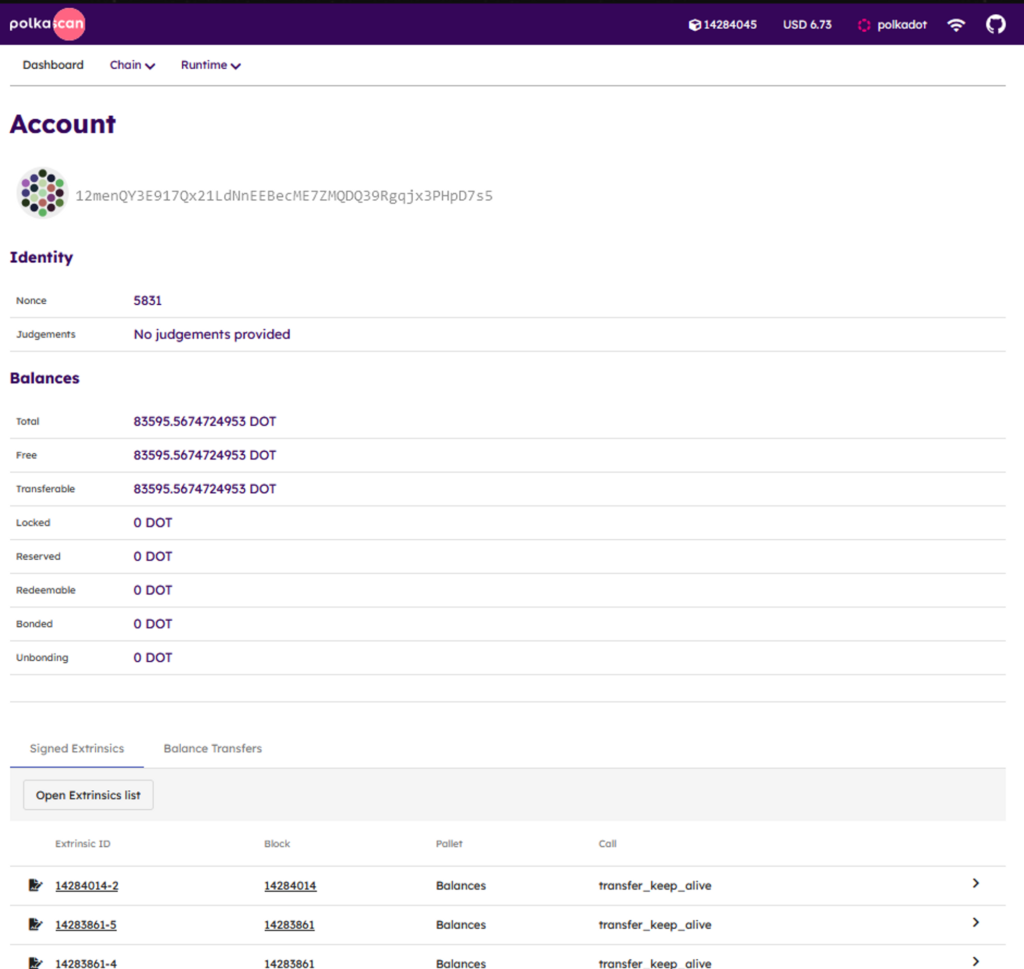
2. Search for blocks – If you know the block ID of a specific transaction, you can use Polkascan to search for that block.
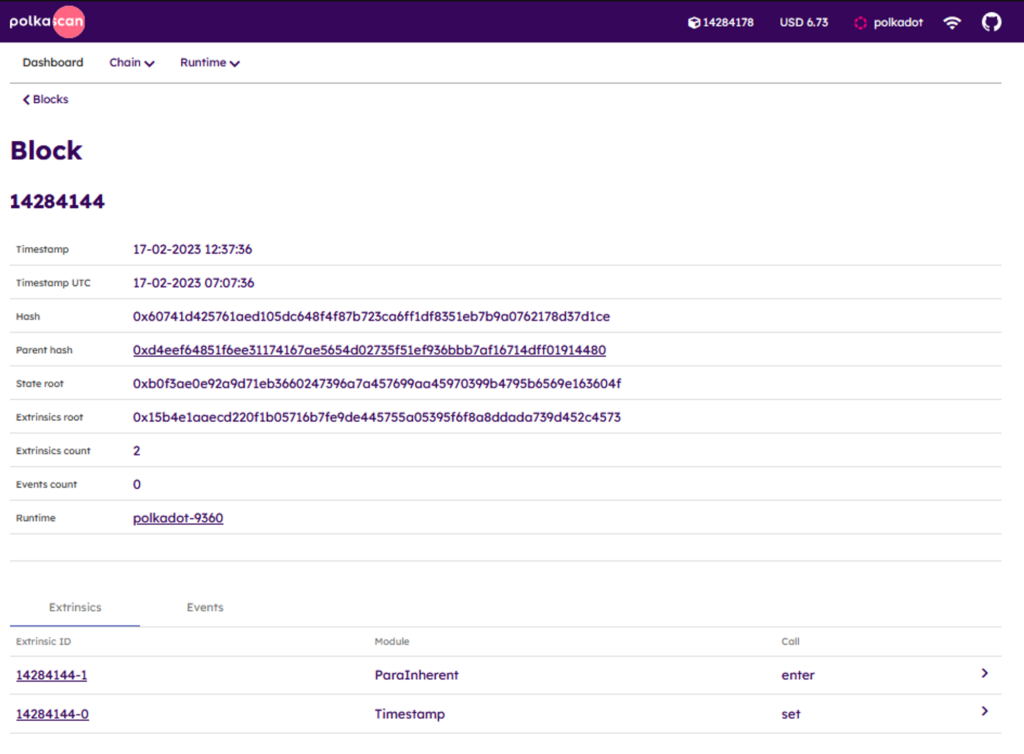
3. View transactions on the network – You can filter by pallets and apply sub-filters based on the pallet. For instance, you can filter by Auctions and sub-filter by bid or new_auction.
Source: Polkascan.io
On a side note, crowdloans allows a team to crowdsource DOT, for Polkadot slots, to bootstrap their parachain auction. It enables users to help by pledging to lock up their DOT until the end of the lease. You can use Polkascan and other explorers to see the auctions and their statuses.
You can do these basic things with Polkascan, but do we have alternatives for the explorer? Yes, we do. Let’s take a look at some.
Top 3 Polkadot Explorer Tools
You can explore Polkadot, Kusama, and other Substrate chains and parachains using a variety of block explorers. Here are the best three:
1. Subscan – A block explorer that works with Polkadot, Kusama, and chains built Substrate. You can query every transaction on the network.
The explorer supports multiple chains, including Moonbeam, Astar, Acala, and Kusama. It offers a user-friendly interactive experience in Staking, EVM, Parachain, and other modules besides searching for Block, Extrinsic, Event, and Account. They also provide customized services for unique functions and advanced API services.
2. Sub.id – You can query transfers, assets, balance, NFTs, etc., on the chain using this block explorer. The website’s homepage also shows ‘interesting accounts’ based on their on-chain activity, and you can explore its details like balance, NFTs, transfers, etc.
Sub-id is an offering by Subsocial, a Layer 1 chain in the Kusama ecosystem for social finance.
3. Polkastats – Polkastats is a block explorer for Polkadot, Kusama, and other chains built on the Substrate framework. They provide comprehensive staking info for Polkadot with an intuitive UI.
The homepage gives us an overview of the ecosystem with numerical and graphical data. The project was built with a grant from the web3 foundation.
Conclusion
Polkadot is a ground-breaking framework for building interoperable blockchains. It boasts excellent security, scalability, and decentralization. Another plus is the Substrate framework’s ability to effectively democratize the development of new blockchains directly benefiting from its robust design.
Besides, the network’s integrated auction system is a fantastic incentive for investors and developers. It serves as a crowdfunding mechanism for parachains and rewards backers who believe in their favored projects.
Although far from being the “next Ethereum” an “Ethereum killer”, Polkadot rejects the notion that there should only be a single blockchain. By utilizing a hub-and-spoke style architecture to complement the larger crypto ecosystem, it ushers in a new age of cross-chain interoperability and enhances the sustenance of web3.
⬆️ For more cryptocurrency news, check out the Altcoin Buzz YouTube channel.
⬆️ Our popular Altcoin Buzz Access group generates tons of alpha for our subscribers. And for a limited time, it’s Free. Click the link and join the conversation today.



